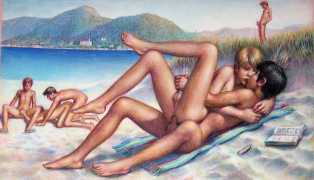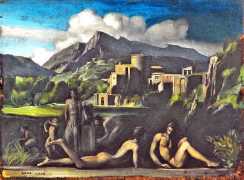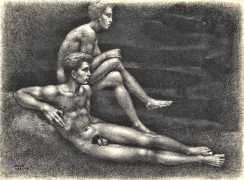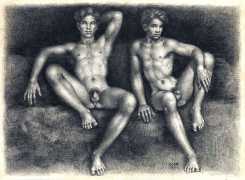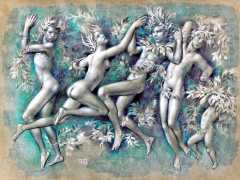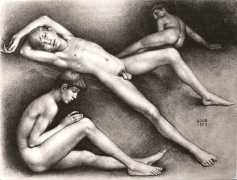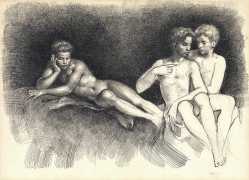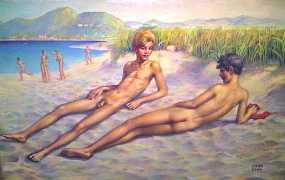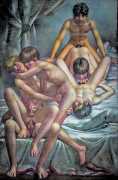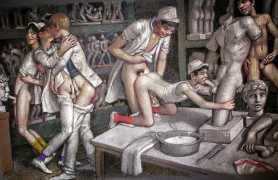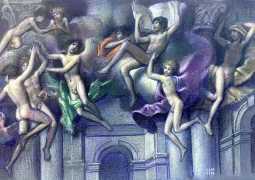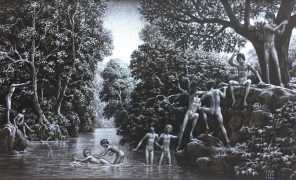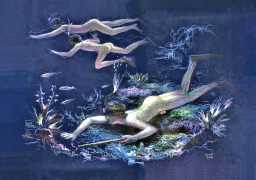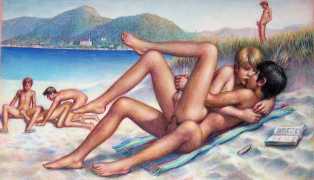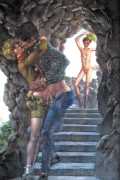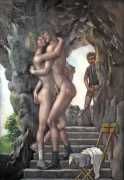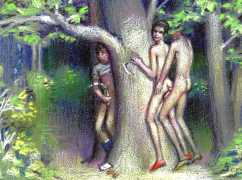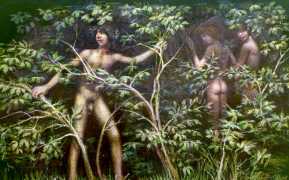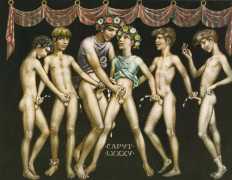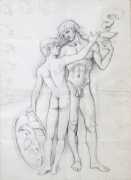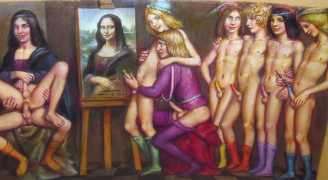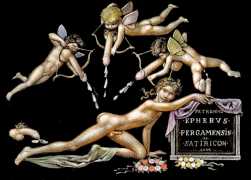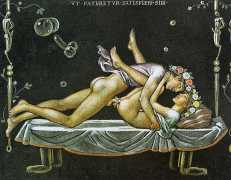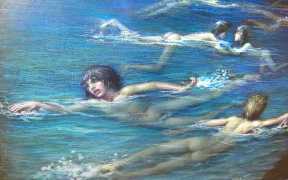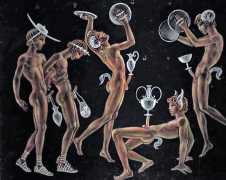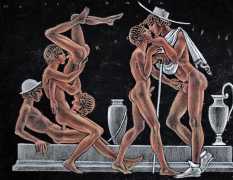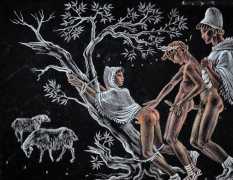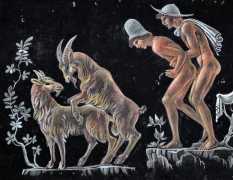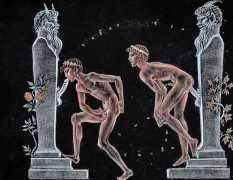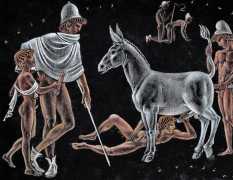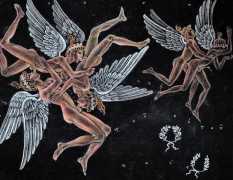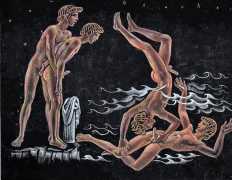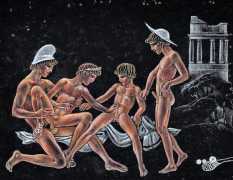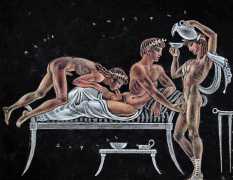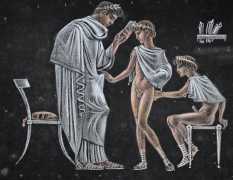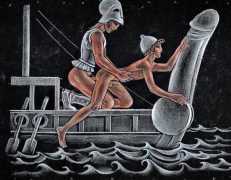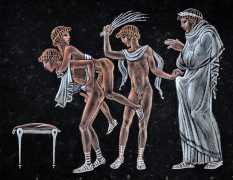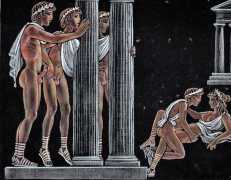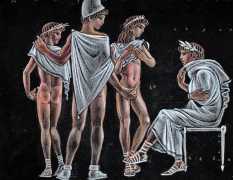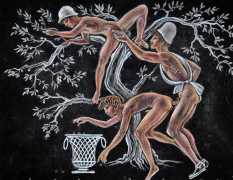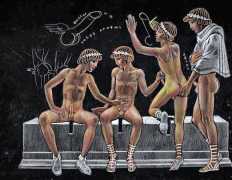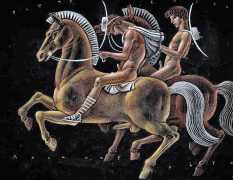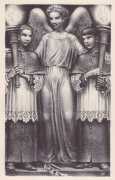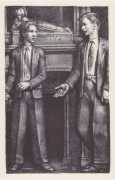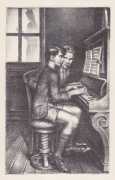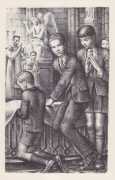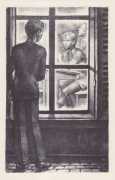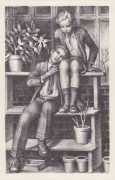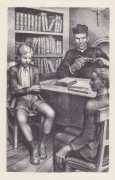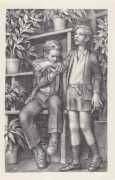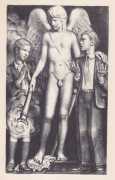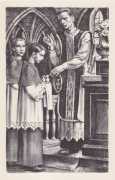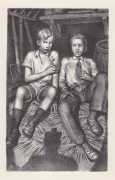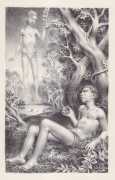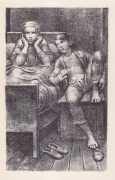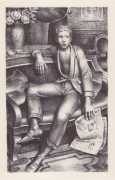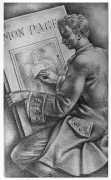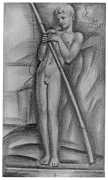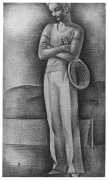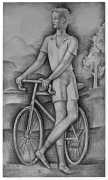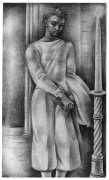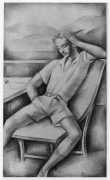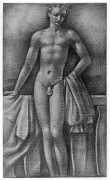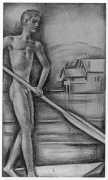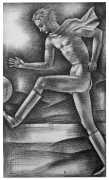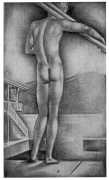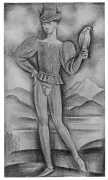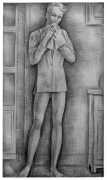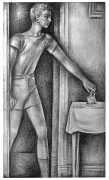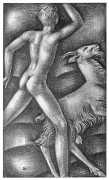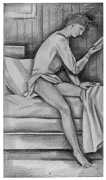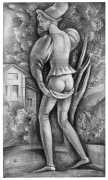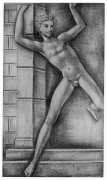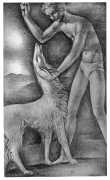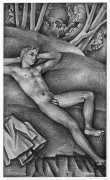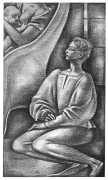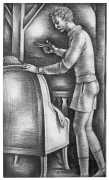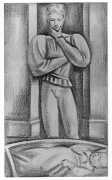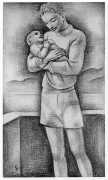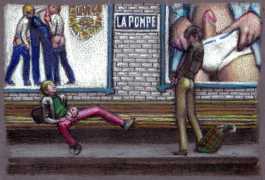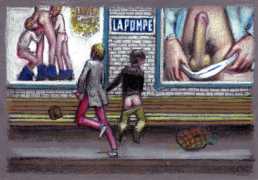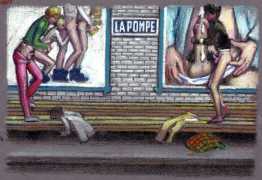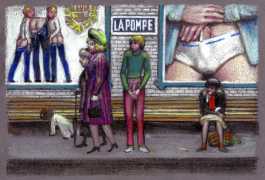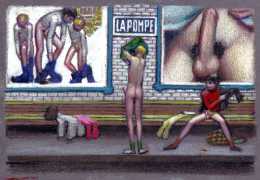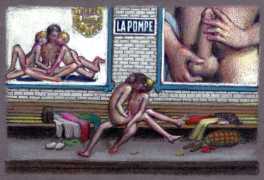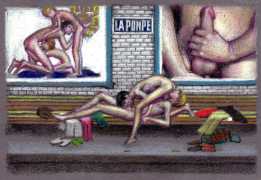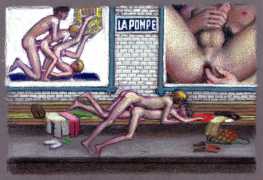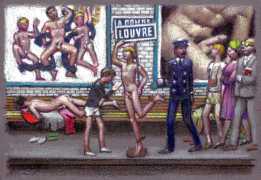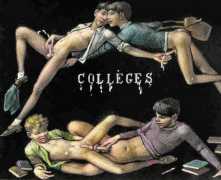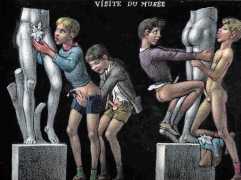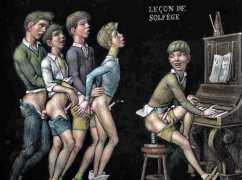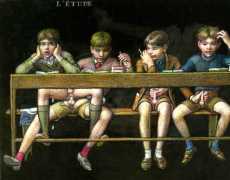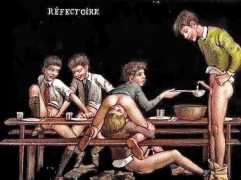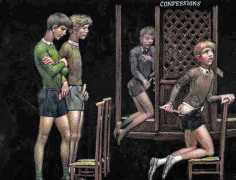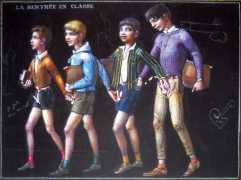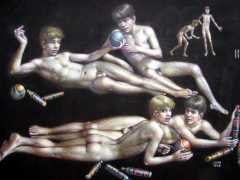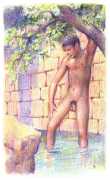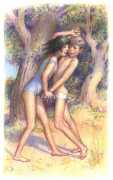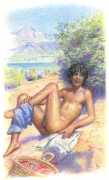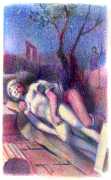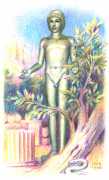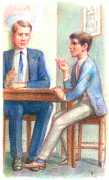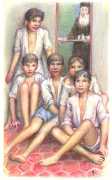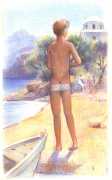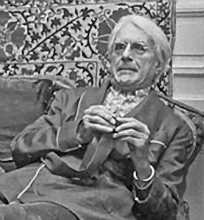 Gaston Marie Charles Leo Gibson Goor grew up in Lunéville in eastern France, and at the age of seventeen entered the École des Beaux-Arts at Nancy. In 1925 he left his native Lorraine and travelled to Paris to work in the studio of Amédée Ozenfant, the founder with Le Corbusier of the Purism movement and the magazine L’Esprit Nouveau. He was introduced to modern art, and met Pablo Picasso, Henri Matisse, Roger Lurçat and Max Jacob.
Gaston Marie Charles Leo Gibson Goor grew up in Lunéville in eastern France, and at the age of seventeen entered the École des Beaux-Arts at Nancy. In 1925 he left his native Lorraine and travelled to Paris to work in the studio of Amédée Ozenfant, the founder with Le Corbusier of the Purism movement and the magazine L’Esprit Nouveau. He was introduced to modern art, and met Pablo Picasso, Henri Matisse, Roger Lurçat and Max Jacob.
It was his visits to Versailles that formed his love of classical art to balance the more experimental advances in the world of art, a balance which during the 1920s drew him towards the profession of illustrator. He became the main illustrator for the Éditions de Capitole, who published André Gide, Léon Daudet (Le voyage de Shakespeare), Charles Maurras, François Mauriac (Dieu et Mammon, Trois grands hommes devant Dieu), and Pierre Mac Orlan. He also worked for Horizons de France, Éditions À l’Enseigne du Pot Cassé (Diderot’s La religieuse and Voltaire’s L’ingénu), and Trianon (the works of Restif de la Bretonne).
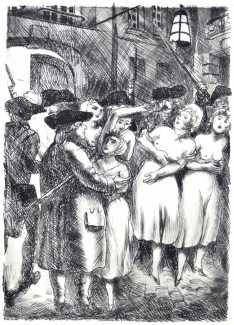
His life took an important turn when he moved to the Mediterranean hillside town of Hyères in 1933, and connected with the writer and gallery owner Lyon Renaud Icard (1886–1971). Goor had created a large painting of naked young men, which Icard admired and exhibited in his Lyon gallery L’Art Français. A friendship developed between the two men, who were both exploring their homosexuality. Gaston Goor created the illustrations for Icard’s autobiographical book Mon page, though the book was not published until 2009. Goor was commissioned to design interior decorations for wealthy clients and art lovers. Among these was Jean Joerimann, owner of the Châteaubriand Hotel in Hyères; Goor was for a while in love with Joerimann, and an absence of reciprocity caused him great anguish.
Called up on by the architect Maurice Novarina (1907–2002) to decorate the Church of Douvaine in Haute-Savoie, Goor moved to the area in 1942. In 1943 Goor was accused by German police of helping Jewish people to cross the Swiss border, and found himself in a camp near Zittau in Saxony.
After the war Goor returned to Paris, and in 1947 contracted a marriage of convenience with a Polish immigrant, Marie Angèle Zajackowski. In 1950 he was commissioned by Flammarion to provide illustrations for Roger Peyrefitte’s coming-of-age novel Amitiés particulières. This marked another turning point in Goor’s life; the openly gay Peyrefitte became his main patron, and the catalyst for him creating a large number of erotic works, mostly for other gay members of Peyrefitte’s circle.
Gaston Goor left Paris for Hyères in 1974, and painted until the end of his life. Sculptor, painter, pastellist, illustrator, most of Gaston Goor’s works are held in private collections, so are less well known than this important artist deserves.
We would like to thank our Russian friend and contributor Yuri for introducing us to the work of this artist and supplying many of the images.

